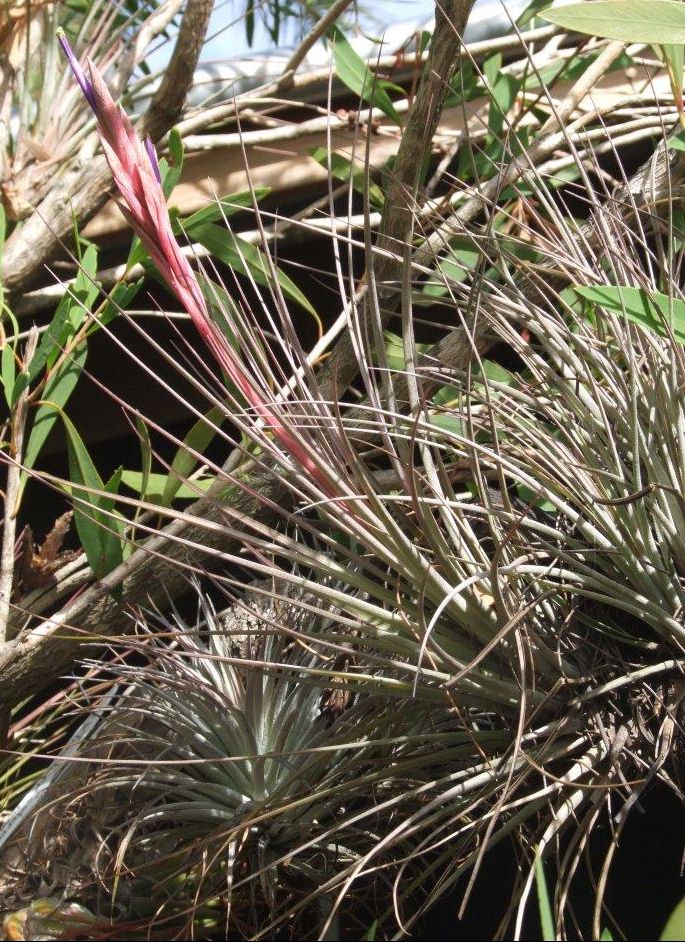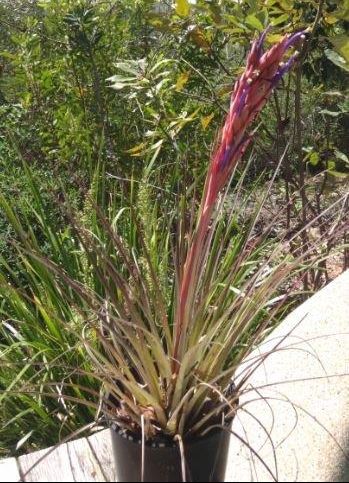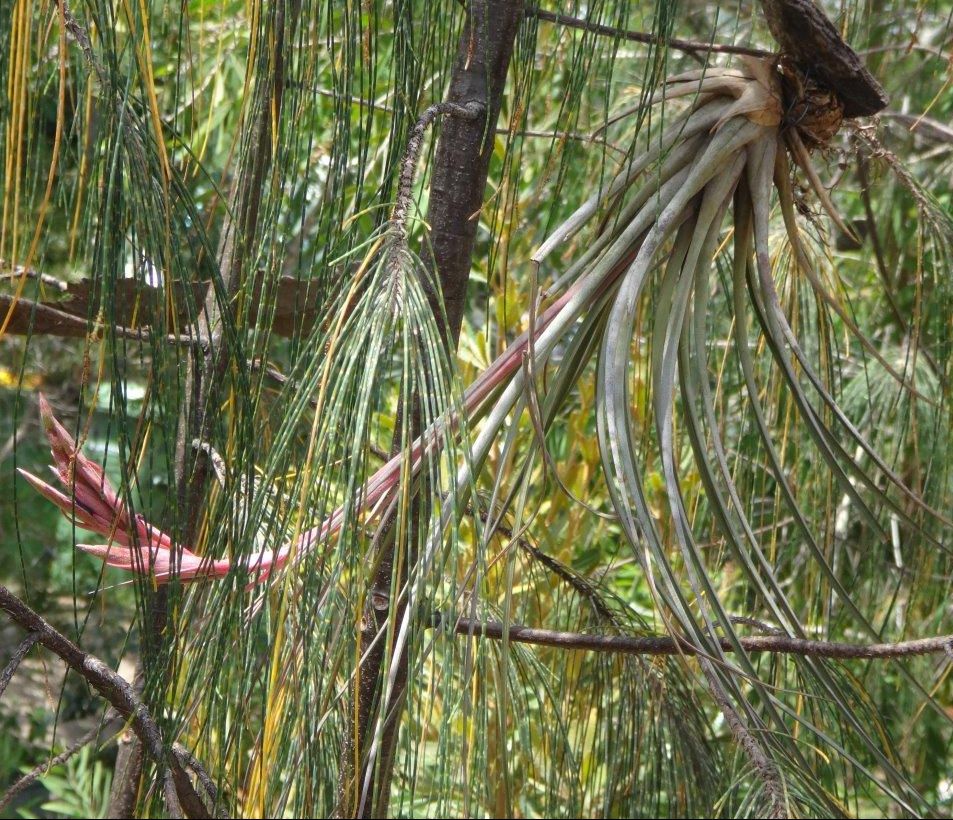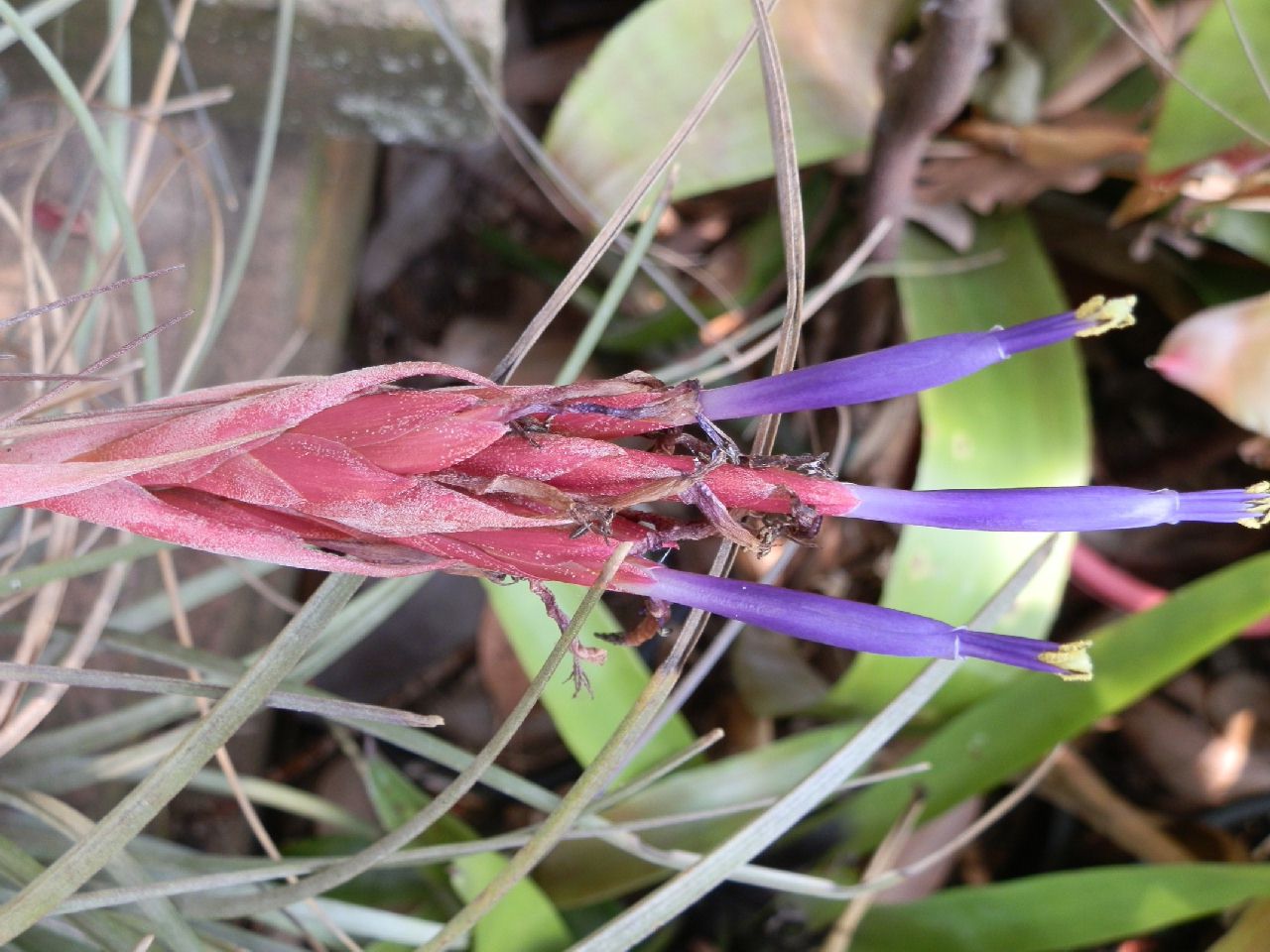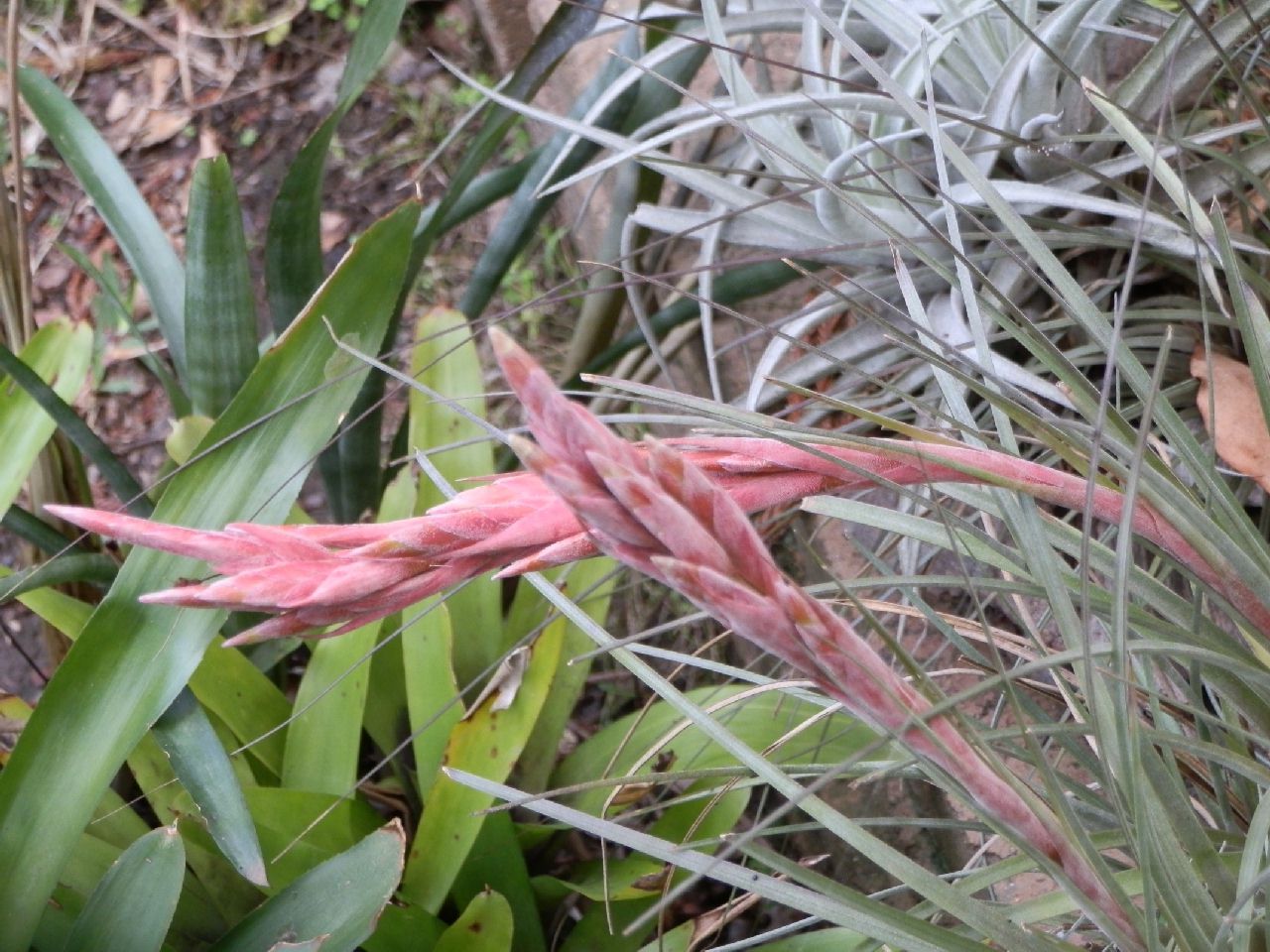
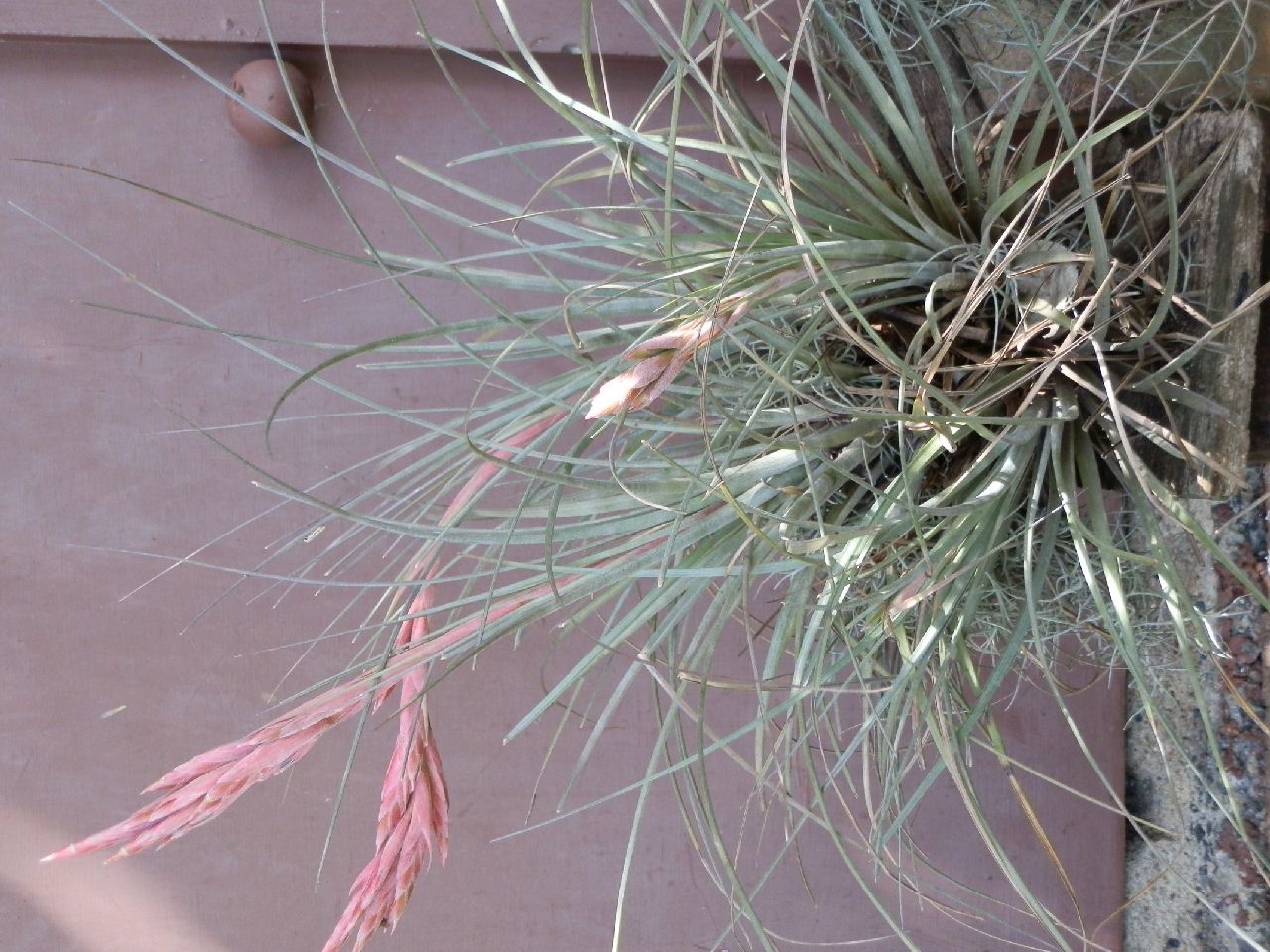
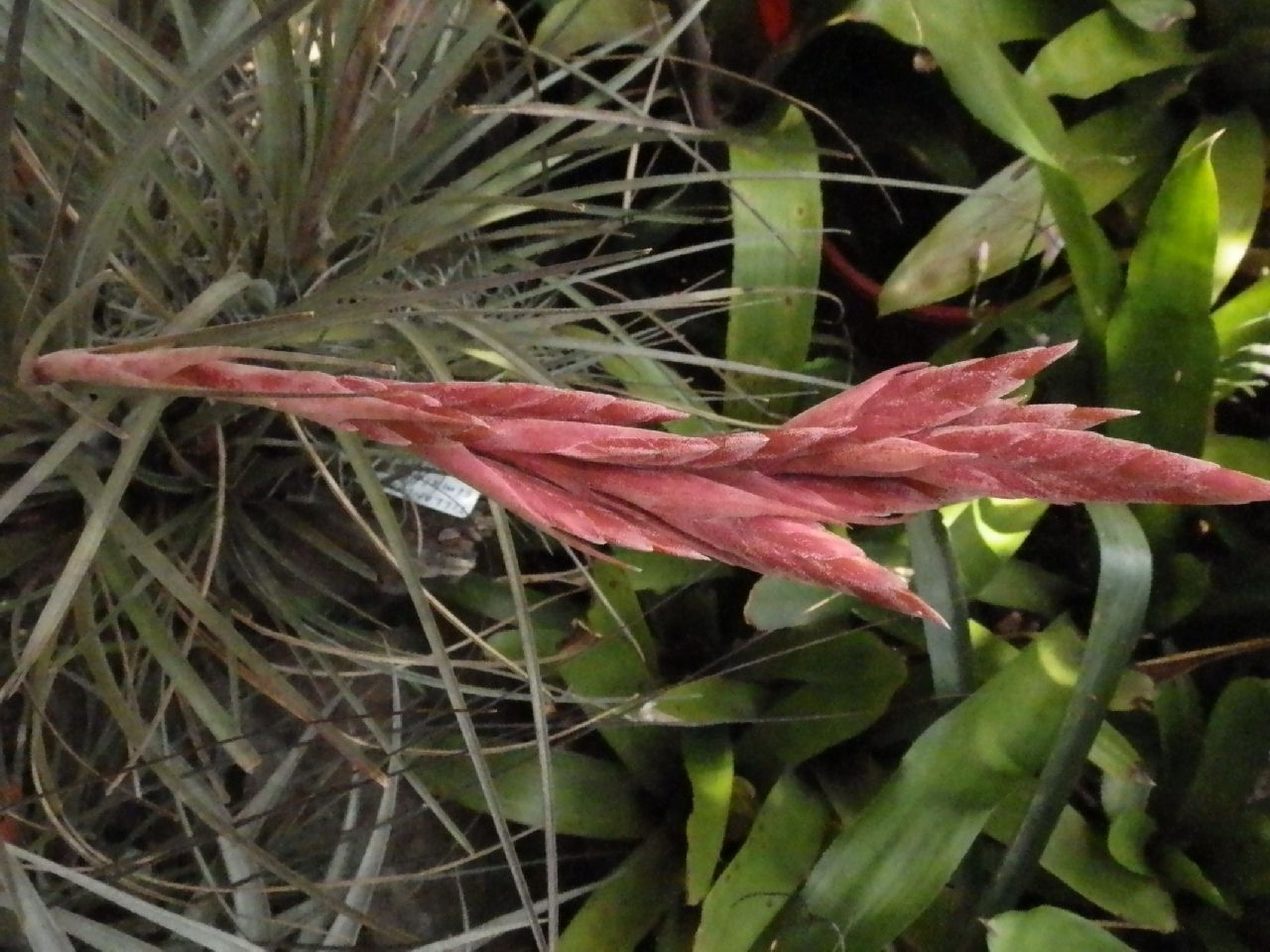
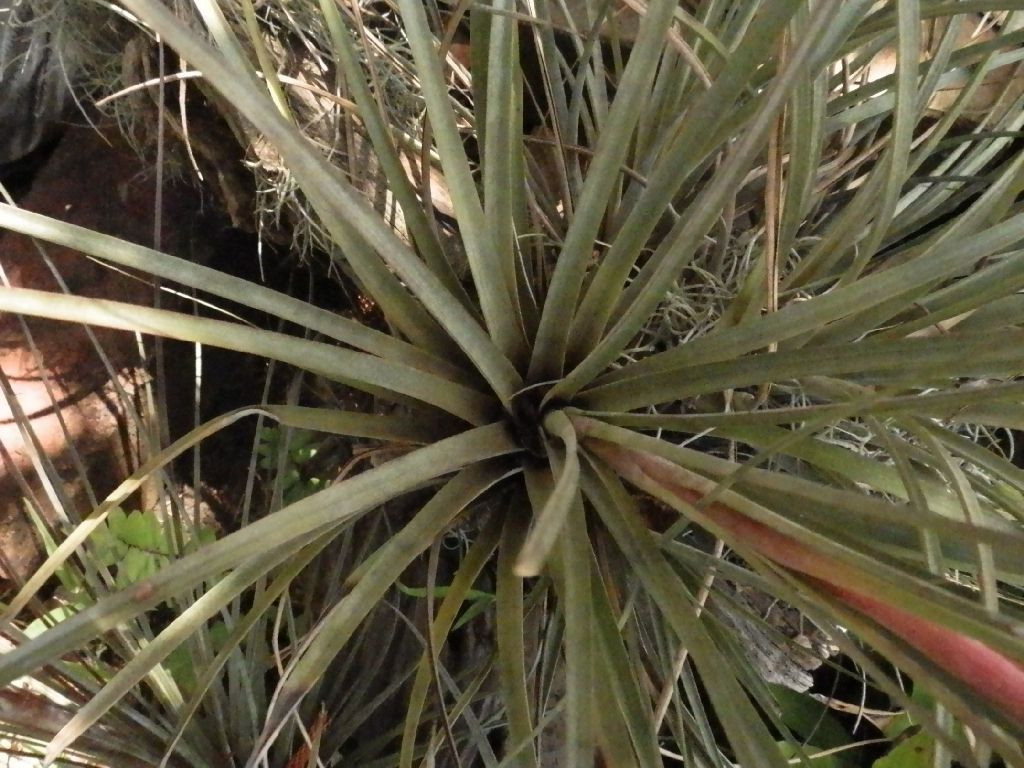
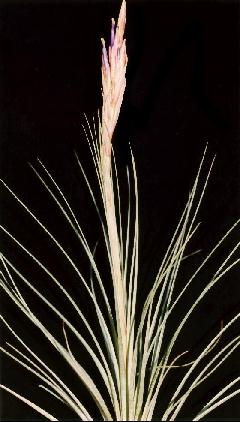
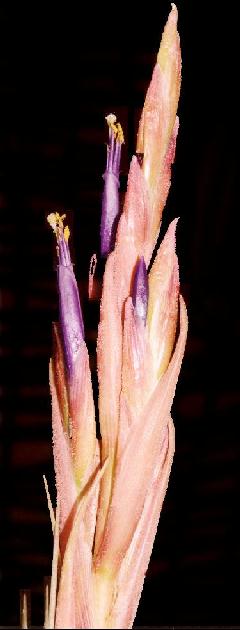
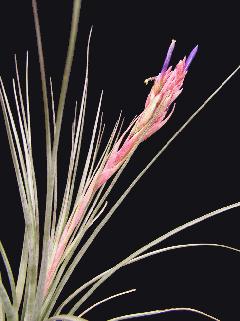
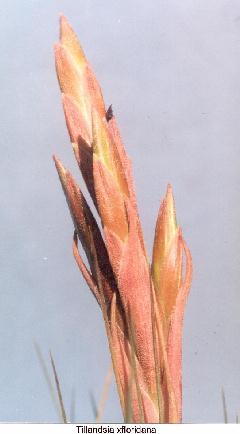
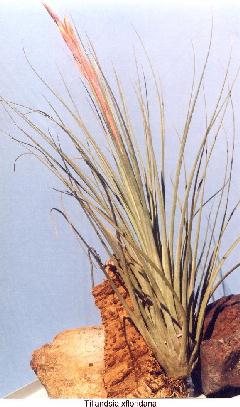
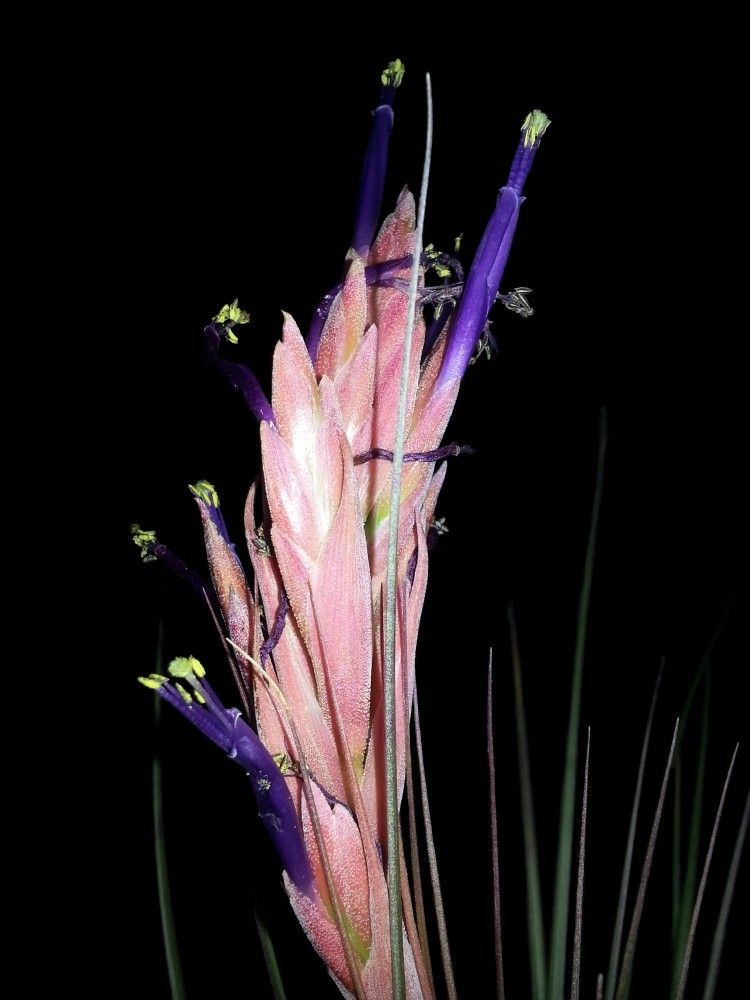
The narrow leaf Tillandsia taxa of central Florida have been a source of confusion for many years (Smith, 1966). Previous workers, dealing mainly with herbarium material have found great difficulty in applying names to the variable populations of tillandsias found from Lake Okeechobee northward in peninsular Florida. Only by observing living populations is it possible to understand this variation and correlate characters of the living plants with artifacts of preserved specimens.
In central Florida Tillandsia fasciculata Sw. var. densispica Mez (near the northern limit of its range) apparently hybridizes with the dominant species, Tillandsaia bartramii Elliot. Specimens more or less morphologically intermediate between these species are fairly frequent. In some populations the proported hybrid plants tend to greatly resemble the T. bartramii parent suggesting further backcrossing. It should be noted that the type specimen (Foster 2820 at US) more closely resembles a typical T. fasciculata var densispica than most of the additional material l examined. Mulford Foster (cf. letter with type at US) suggested a hybrid origin for his 2820 but appeared to dismiss this possibility without explanation. C. S Gardner (1982, and pers. comm.) also concluded that this taxon was of hybrid origin but did not propose any nomenclatural changes.
Tillandsia X floridana may be distinguished from T. bartramii by its larger size and more ample inflorescence as well as a tendency to form more erect, not hemispherical clusters. It differs from T. fasciculata by being usually somewhat smaller with narrower leaves and having pink (not red or green) rather thin, usually lepidote floral bracts.
Tillandsia x floridana by Derek Butcher 2000
In Flora Neotropica Monograph 14 Part 2 1977 Lyman Smith described Tillandsia floridana as a variety of Tillandsia fasciculata. It now seems firmly entrenched as a natural hybrid between Tillandsia fasciculata v. densispica and T. bartramii.
Toward the end of 1999 a plant I had received as Tillandsia setacea 10 years before again flowered and I felt sure it had to be the mysterious Tillandsia Xfloridana. I say mysterious because I had never seen a full description of this plant and there are very few photographs about. One I did find in the New Tillandsia Handbook by Hiroyuki Takasawa which I will refer to later.
I first put my queries to Dr Walter Till who kindly sent me a copy of Phytologia 57 (3) 1985 where Harry Luther had described this natural hybrid.
My problem was that this Tillandsia setacea had come from Arizona Cactus Nursery in Sydney, Australia in 1989 who had imported batches of tillandsias from Guatemala and California. It would have been unlikely to have come directly from Florida.
Let us look at the comments made by Harry Luther in 1985.
“The narrow leaf Tillandsia taxa of Central Florida have been a source of confusion for many years (Smith, 1966). Previous workers, dealing mainly with herbarium material have found great difficulty in applying names to the variable populations of tillandsias found from Lake Okeechobee northward in peninsular Florida. Only by observing living populations is it possible to understand this variation and correlate characters of the living plants with artefacts of preserved specimens.
In central Florida Tillandsia fasciculata v. densispica (near the northern limit of its range) apparently hybridizes with the dominant species, Tillandsia bartramii. Specimens more or less morphologically intermediate between these species are fairly frequent. In some populations the proported hybrid plants tend to greatly resemble the T. bartramii parent suggesting further backcrossing. It should be noted that the type specimen (Foster 2820 at US) more closely resembles a typical T. fasciculata v. densispica than most of the additional material examined. Mulford Foster (cf. letter with type at US) suggested a hybrid origin for his 2820 but appeared to dismiss this possibility without explanation. C. S. Gardner (1982, and pers. comm.) also concluded that this taxon was of hybrid origin but did not propose any nomenclatural changes.
Tillandsia Xfloridana may be distinguished from T. bartramii by its larger size and more ample inflorescence as well as a tendency to form more erect, not hemispherical clusters. It differs from T. fasciculata by being somewhat smaller with narrower leaves and having pink (not red or green) rather thin, usually lepidote floral bracts”
My plant fits into the description but could easily have come from Mexico where many like plants abound such as Tillandsia hammeri and T. juncea. To show what a tangled web we weave it may be noted that the “old T. juncea” of Florida is really T. bartramii! My plant could easily have been misnamed and remember that both T. fasciculata and T. bartramii occur in Mexico and could produce T. xfloridana-like hybrids there too!
My plea to the Floridian experts in home-grown tillandsias is for a photograph of a ‘normal’ T. Xfloridana to compare with mine. Please also look at the New Tillandsia Handbook page 105 where the plant seems closer to T. bartramii parent as advised in the Harry Luther statement.
Meanwhile I have decided not to link my plant with T. x floridana but to look towards T. hammeri.
282g. Tillandsia fasciculata var floridana L. B. Smith, Phytologia 15: 197. 1967.
Desc from S&D
Inflorescence of several small spikes like those of var densispica Mez of Florida. Floral bracts thin-coriaceous, somewhat lepidote.
TYPE. Foster 2820 (holotype US), on Taxodium, near Holopaw, 15 m alt, Osceola County, Florida, United States,23 Mar 1953.
DISTRIBUTION. Epiphytic, southern Florida
UNITED STATES. FLORIDA, Palm Beach: West Palm Beach, Bartsch s n (US): Monroe: Pine Crest, 18 Feb 1930, Moldenke 656 (NY, US).
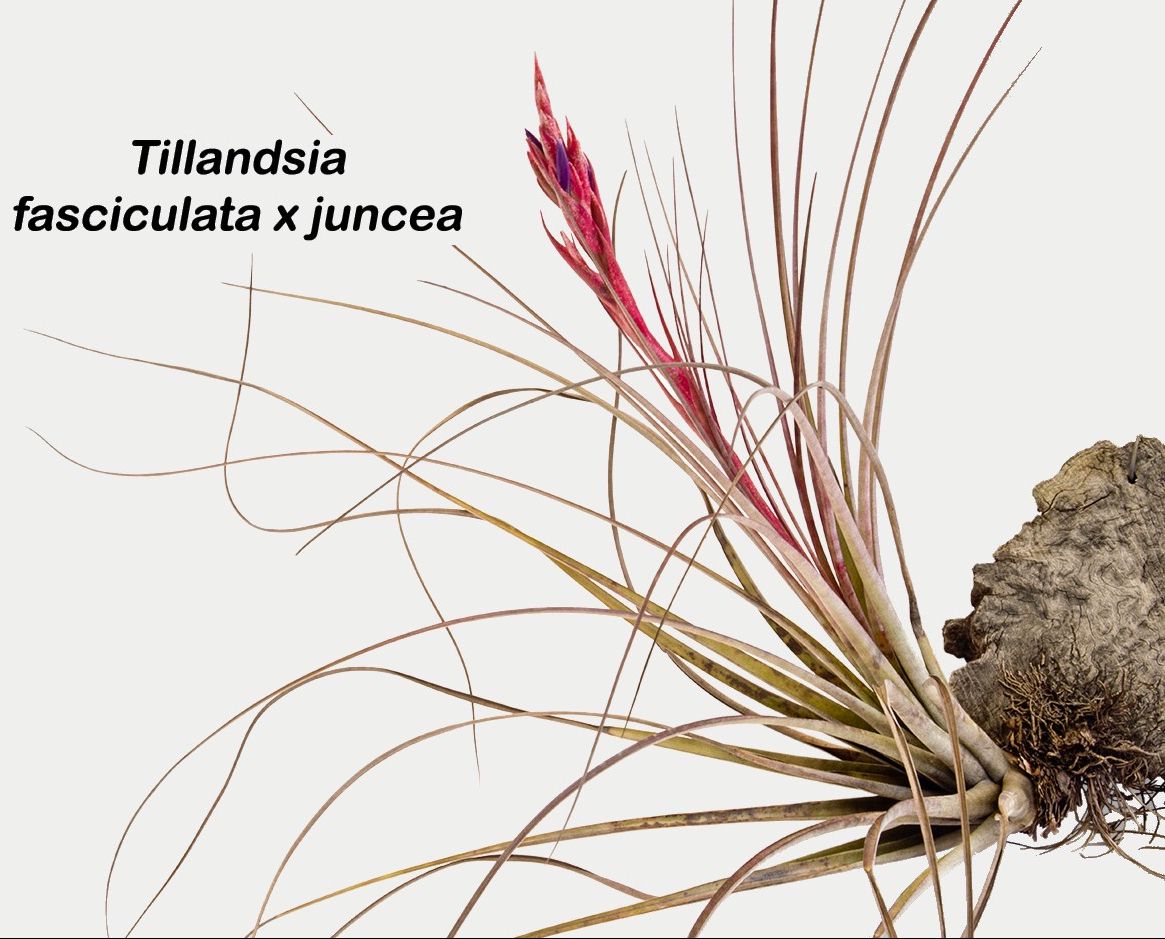
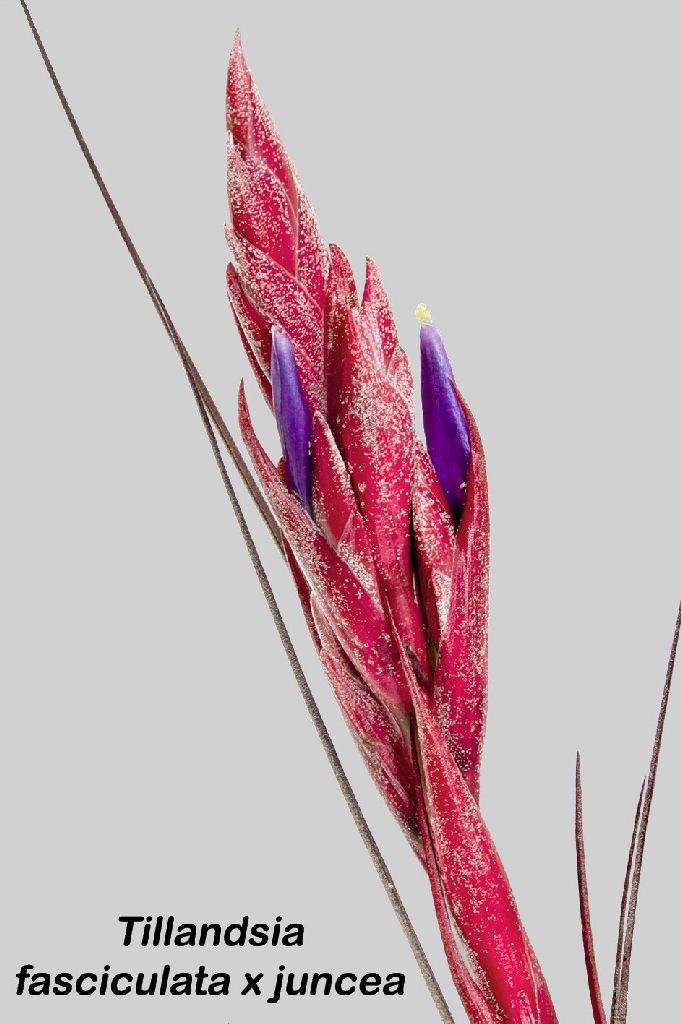
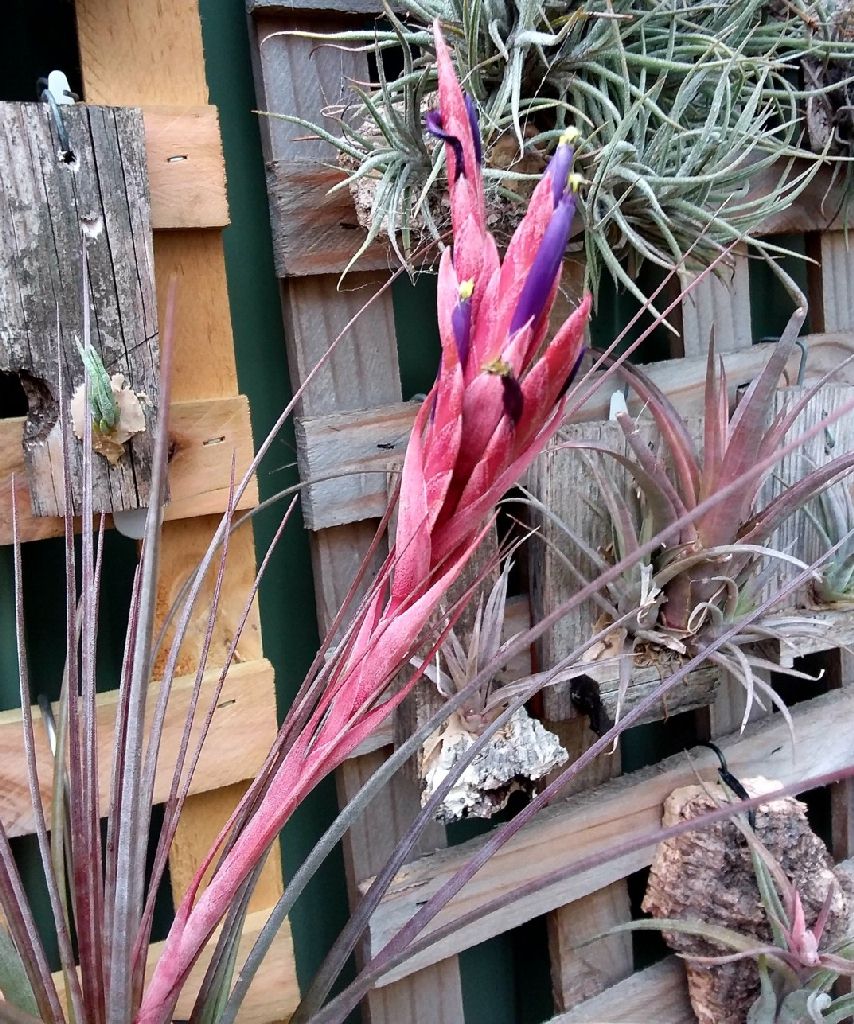
Below is what I learned today.
First lesson was keep tags and records on provenance if you suspect something is amiss.
I didn't question my plant from Vic Przetocki, until seeing he questioned it, and the email trail perhaps touches even further back with Chris Larson and Bob Hudson, so we might all have the same plant, but a questionable or erroneous ID. So even the collective neuron keeps an open mind.
Second lesson, no big deal to change a tag if suspected wrong. It states the obvious that private collections or botanical gardens usually precede taxonomy by a long time so ID errors persist while taxonomy is in progress, if the taxonomy is ever done at all. The old-fashioned morphology approach is helpful but trust genetic studies if they have been done. Most haven't. This Tillandsia group healthily acknowledge that morphology is plagued by phenotypic plasticity, cultural differences. A particular value to novices (like me) is to benefit from the accumulated experience of elders, while developing an eye for subtle differences.
The colour bract characteristic that stood out by the recent photos of WA grown specimens (Vic Przetocki, me) is that they get lots of sun & generous fertilizer. Does that account for the richer red coloration than pink? After laying my plant on top of that Isley color chart - pink? no way. But the plant form, blades, sepals, etc all other characteristics seem to fit with x floridana as Dereck suggested. However, I found that all consulted references and photos show or mention pink-bracted plants, except Luther and Benzing's 2009 key states floral bracts uniformly red to rose even though their color plate looks pink bracts. I put the putative specimen next to a x floridana in my collection and can accept that bract color differences are probably cultivation differences. I also had images of recent fasculata v. densispica and bartramii to compare.
To quote Luther (1985): " Tillandsia X floridana may be distinguished from T. bartramii by its larger size and more ample inflorescence as well as a tendency to form more erect, not hemispherical clusters. It differs from T. fasciculata by being somewhat smaller with narrower leaves and having pink (not red or green) rather thin, usually lepidote floral bracts”. But later in 2009, his bract description changed to rose-red.
Don't know about the possibility of the cross because quoted fasculata and juncea ranges do not overlap. If it were a human made hybrid, the correspondence so far suggests there aren't any hybridists giving away clues.
In short, after all that homework the label on my blooming plant is changing to x floridana.
And going to test if sun & fertilizer will change the still spiking x floridana from pink to red.
Whether fasculata x juncea should be kept or abandoned is up to the collective 'Bromeliads in Australia' neuron."
